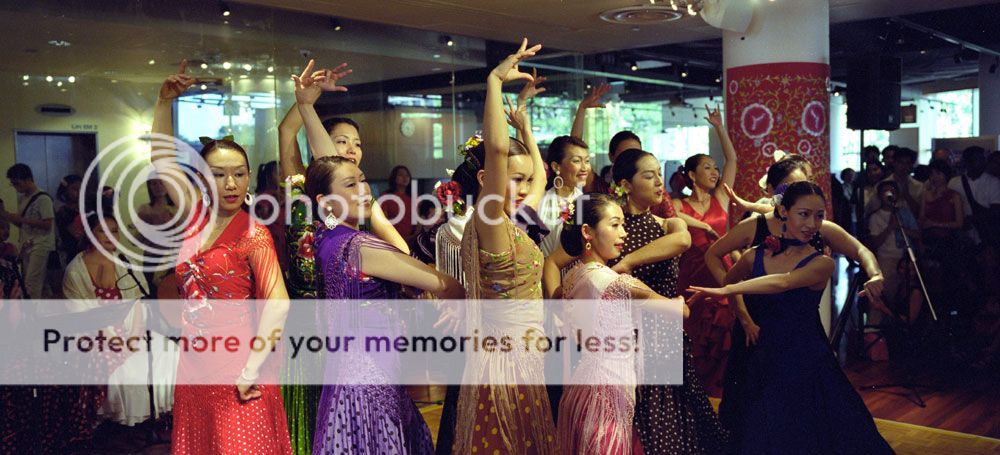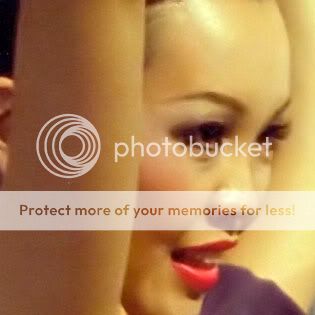I've used some rolls of this film and had pretty bad results most of the time: the film grain is huge and film looks underexposed, even though I'm using shutter speeds recommended by the camera (Konica Hexar), which are well within the camera's maximum shutter speed. At first I thought it might be the lab, but I've tried at least two different ones with the same result. So could it be the film? I've read that Press 800 might be better, though I do not remember getting results that are very much better. Has anyone tried the new Natura 1600 film?
Fuji Superia 800
- Thread starter rubric
- Start date
You are using an out of date browser. It may not display this or other websites correctly.
You should upgrade or use an alternative browser.
You should upgrade or use an alternative browser.
- Status
- Not open for further replies.
It could be your camera's metering or where you are aiming the meter. Personally I find both Superia Xtra 800 and Press 800 to be identical in grain size, with Xtra800 appearing just a bit more saturated occasionally. Basically I take them to be the same. Superia 800 is quite acceptable even when underexposed by up to 1 stop.
If you are not getting good results with Xtra 800, it will be the same with Press 800. Try shooting another roll with +0.6EV of compensation or try metering more conservatively.
If you are not getting good results with Xtra 800, it will be the same with Press 800. Try shooting another roll with +0.6EV of compensation or try metering more conservatively.
If your exposure is right on the dot.....it will cause some grain to appear more prominently, especially on high speed films. Try exposing at least 2/3 - a full stop over.
Press 800 is one of the finest fast speed grain film i have came across.
Press 800 is one of the finest fast speed grain film i have came across.
your exposure is probally screwed up. but in any case switch to press 800 its superb
This is press 800 pushed to 1600, Taken using Av mode. in camera metering. Xpan

heres a zoomed version scanned at 2700dpi

Notice the grain? oh what grain? well okay its realtively evident. but still its soooo fine! for a 800 film this is pretty darn awesome.
Use press 800 and you will have no regrets.
This is press 800 pushed to 1600, Taken using Av mode. in camera metering. Xpan

heres a zoomed version scanned at 2700dpi

Notice the grain? oh what grain? well okay its realtively evident. but still its soooo fine! for a 800 film this is pretty darn awesome.
Use press 800 and you will have no regrets.
Thank you for the advice. I think you guys are right, I probably screwed up the metering as I was working under stress. ;p After all the camera works great with other film. I'll also try overexposing the film next time, perhaps even try the Press film again. By the way, I recently saw in an American photography mag Kodak Portra 800. Is this available locally, and if so, how does it compare with the Fuji films?
Have something to check with you guys.
If i were to use Superia 800 and overexpose by 1 stop, it is like rating it as a ISO 400 film?
How would rating Superia 800 as ISO 400 compare to just Superia 400?
What if i need ISO 800 for my shooting?
Use Superia 1600 and rate as ISO 800?
If i were to use Superia 800 and overexpose by 1 stop, it is like rating it as a ISO 400 film?
How would rating Superia 800 as ISO 400 compare to just Superia 400?
What if i need ISO 800 for my shooting?
Use Superia 1600 and rate as ISO 800?
Erm... using 800 at 400 is a bad idea now a days... I think only RGB does pulling and pushing of film..
I was deversated about 7 months back with konota decided to stop push processing...
but it was for the better, push and pull processing was expensive.
if you need 800 for your shoot just use Fuji Press 800, its the best out there.
Look at my samples above.
If you need 1600, push it and send it to RGB.
Pulled press 800 at 400 also looks decent but not very contrastly.... a little matted in my opinion and this applies to all pulled film. Superia 800 and 1600 included.
fellers stick to press 800.... just shoot at 800 all the time for low light situations. not much of a big deal. will typically get enough speed.
I was deversated about 7 months back with konota decided to stop push processing...
but it was for the better, push and pull processing was expensive.
if you need 800 for your shoot just use Fuji Press 800, its the best out there.
Look at my samples above.
If you need 1600, push it and send it to RGB.
Pulled press 800 at 400 also looks decent but not very contrastly.... a little matted in my opinion and this applies to all pulled film. Superia 800 and 1600 included.
fellers stick to press 800.... just shoot at 800 all the time for low light situations. not much of a big deal. will typically get enough speed.
Helbreath said:Have something to check with you guys.
If i were to use Superia 800 and overexpose by 1 stop, it is like rating it as a ISO 400 film?
Your above statement I assume you put an ISO 800 film, set the the ISO on the camera to 400 and shoot without compensation. Alternatively it is like shooting an ISO 800 film and set the ISO on the camera to 800, but you add +1 to your Exposure Compensation.
How would rating Superia 800 as ISO 400 compare to just Superia 400?
Try to look for the other thread where Pro Image posted a very well explain reason why you should overexpose the negative. Since ISO 800 film is twice as sensitive to light compared to ISO 400 film, exposing it at ISO 400 would get you more details captured on the negative (which is different from positive and digital). Most modern negative films can handle +1 or +2 overexposure well. Of course if you know negative, the more light it capture the more dark it will become, hence the longer you will need to expose it to the photo paper in a dark room or using conventional printing. Overexposing negatives basically burn the grain in areas like the sky while capturing more details in the shadow.
What if i need ISO 800 for my shooting?
Use Superia 1600 and rate as ISO 800?
Shoot ISO 800 film at ISO 800, but tell the lab to push one stop. By pushing 1 stop it is effectively an ISO 1600 film, but you will gain contrast and grain depending on the film. Since it is shot at ISO 800 you overexpose it technically by 1 stop, retaining details.
Barret said:Erm... using 800 at 400 is a bad idea now a days... I think only RGB does pulling and pushing of film..
Shooting ISO 800 film at ISO 400 does not require pulling as long as it is negative with good exposure latitude. Most modern negatives can handle +1 overexposure, some even up to 4 stops overexposed possible.
I was deversated about 7 months back with konota decided to stop push processing...
but it was for the better, push and pull processing was expensive.
if you need 800 for your shoot just use Fuji Press 800, its the best out there.
Look at my samples above.
If you need 1600, push it and send it to RGB.
Pulled press 800 at 400 also looks decent but not very contrastly.... a little matted in my opinion and this applies to all pulled film. Superia 800 and 1600 included.
fellers stick to press 800.... just shoot at 800 all the time for low light situations. not much of a big deal. will typically get enough speed.
I think RGB no more doing retail business. Their Beach Road branch sold to Fotohub. There is not only RGB that provide push/pull services, I believe Stanley also do that (since their customer flow not that much compared to KT or your normal lab and they are also open concept lab), Ruby do that also for slides (not sure of negative but I still possible too). 35mm Colour Lab at The Aldephi also push/pull but expensive.
I think Push/Pull concept is different from Overexposing and Underexposing. When you overexpose a negative you do not need to pull in most cases, in fact it is better in most cases in the hands of good operators. For slides it is different as any wrong exposure will render the slide being off the mark (unusable) unless you want it to be this way. I suppose KT MIGHT be able to push/pull given their new 570 machine, need to check that up.
Thanks...but now a days I cant be bothered with pushing or pulling film. Theres no point really. I rather get it spot on. ever time always.
My workflow ends up digital anyways, cos i scan my mf stuff.
so flexibility is acheived
My workflow ends up digital anyways, cos i scan my mf stuff.
so flexibility is acheived
theITguy said:Since ISO 800 film is twice as sensitive to light compared to ISO 400 film, exposing it at ISO 400 would get you more details captured on the negative (which is different from positive and digital). Most modern negative films can handle +1 or +2 overexposure well. Of course if you know negative, the more light it capture the more dark it will become, hence the longer you will need to expose it to the photo paper in a dark room or using conventional printing. Overexposing negatives basically burn the grain in areas like the sky while capturing more details in the shadow.
Basically, I won't really agree that overexposing gives more details.
Assuming that one metered properly in the first place, adding more exposure simply makes the shadow grain less apparent. Go too far and you start getting homogeneous areas that have less acutance and detail in the midtones and highlights. This is clearly visible on film scans. Yes, you can gain better contrast,saturation and less apparent grain when compensated for in the final print, but perceived sharpness will suffer.
Finally, one also needs to ponder on why he would shoot at ISO400 on an ISO800 film when he specifically needed ISO800 performance in the first place. In my experience, Superia/Press 800 will give good results at their rated
ISO without needing any compensation. Just meter them with the same care as when shooting slides and they will come out fine.
Helbreath: Shooting film at other than its rated ISO and developing normally is known as rerating. Generally you do that either to provide a safety margin or to get a certain intended effect.
Pushing and pulling requires the developer to extend/shorten developing times and gives a different result.(increased/lowered contrast)
- Status
- Not open for further replies.
Similar threads
- Replies
- 0
- Views
- 448
- Replies
- 0
- Views
- 656
- Replies
- 0
- Views
- 322
- Replies
- 0
- Views
- 694
- Replies
- 0
- Views
- 1K


